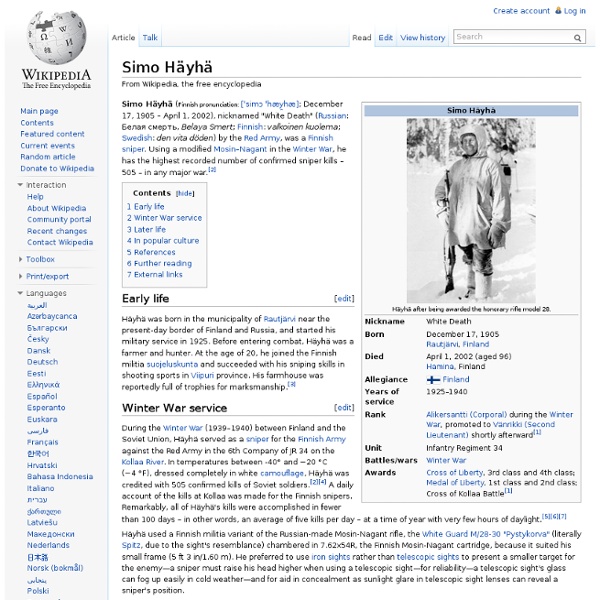Yogendra Singh Yadav
Naib Subedar Yogendra Singh Yadav PVC is a soldier in the Indian army . He was awarded the highest Indian military honour, Param Vir Chakra for his actions during the Kargil War on 4 July 1999. Early life [ edit ] Yogendra Singh Yadav was born in Aurangabad village, Bulandshahr District, Uttar Pradesh . [ citation needed ] Career [ edit ] Kargil War [ edit ] Grenadier Yogendra Singh Yadav of the 18 Grenadiers was part of the Commando ' Ghatak ' (Deadly or Lethal) Platoon tasked to capture three strategic bunkers on Tiger Hill in the early morning hours of 4 July 1999. Yadav then charged the second bunker along with two of his fellow soldiers and engaged in hand-to-hand combat, killing four Pakistani soldiers. PVC Citation [ edit ] Grenadier Yogender Singh Yadav was part of the leading team of a Ghatak Platoon tasked to capture Tiger Hill on the night of ¾ July 1999. After the war [ edit ] Portrayal in film and media [ edit ] References [ edit ]
BBC - Female 'gladiator' remains found in Herefordshire
The archaeology team, are carefully excavating a 10-metre wide corridor Archaeologists in Herefordshire have uncovered the remains of what could possibly be a female gladiator. Amongst the evidence of a Roman suburb in Credenhill, they have found the grave of a massive, muscular woman. The archaeological Project Manager, Robin Jackson, said: "Maybe the warrior idea is one that you could pursue, I'll leave that to people's imaginations." Her remains were found in a crouched position, in what could be a suburb of the nearby Roman town of Kenchester. She was found in an elaborate wooden coffin, reinforced with iron straps and copper strips, which indicate her importance. Robin Jackson said: "When we first looked at the leg and arm bones, the muscle attachments suggested it was quite a strapping big bloke, but the pelvis and head, and all the indicators of gender, say it's a woman." An offering of beef and a fired pot were also found in the grave, and she was buried on top of a base of gravel.
File:Attack on Hamburg.jpg
Jack Churchill
Churchill stares down the barrel of a captured Belgian 75 mm field gun. Early life[edit] Second World War[edit] Churchill resumed his commission after Poland was invaded. In May 1940 Churchill and his unit, the Manchester Regiment, ambushed a German patrol near L'Epinette, France. Churchill was second in command of No. 3 Commando in Operation Archery, a raid on the German garrison at Vågsøy, Norway on 27 December 1941.[10] As the ramps fell on the first landing craft, Churchill leapt forward from his position playing "March of the Cameron Men"[11] on his bagpipes, before throwing a grenade and running into battle in the bay. Jack Churchill (far right) leads a training exercise, sword in hand, from a Eureka boat in Inveraray. In September 1944 Churchill and a Royal Air Force officer crawled under the wire, through an abandoned drain and attempted to walk to the Baltic coast. Later life[edit] Family[edit] Notes[edit] References[edit]
Alcibiades
Alcibiades, son of Cleinias, from the deme of Scambonidae (/ˌælsɨˈbaɪ.ədiːz/;[1] Greek: Ἀλκιβιάδης Κλεινίου Σκαμβωνίδης, transliterated Alkibiádēs Kleiníou Skambōnidēs; c. 450 – 404 BC), was a prominent Athenian statesman, orator, and general. He was the last famous member of his mother's aristocratic family, the Alcmaeonidae, which fell from prominence after the Peloponnesian War. He played a major role in the second half of that conflict as a strategic advisor, military commander, and politician. During the course of the Peloponnesian War, Alcibiades changed his political allegiance on several occasions. In his native Athens in the early 410s BC, he advocated an aggressive foreign policy, and was a prominent proponent of the Sicilian Expedition, but fled to Sparta after his political enemies brought charges of sacrilege against him. In Sparta, he served as a strategic adviser, proposing or supervising several major campaigns against Athens. Early years[edit] Rise to prominence[edit]
File:World War I Observation Balloon HD-SN-99-02269.JPEG
Audie Murphy
Audie Leon Murphy (June 20, 1925 – May 28, 1971) was one of the most famous and decorated American combat soldiers of World War II . He served in the Mediterranean and European Theater of Operations where he was presented the Medal of Honor and several other decorations for heroism in combat including decorations from France and Belgium . He was born into poverty on a farm in northeast Texas and was named for two family friends who kept the Murphys from starving. Murphy lied about his age to enlist in the military and follow his dream of becoming a soldier. He was only 19 years old when he was awarded the Medal of Honor. Murphy always maintained that the medals belonged to his entire military unit. In his postwar civilian life, Murphy enjoyed a two-decade career as actor. Early life [ edit ] She died when I was sixteen. Military service [ edit ] The death of Murphy's mother added even more impetus to his ambition to become a soldier. Mediterranean Theater [ edit ] North Africa [ edit ]
Modern Science Map
File:NationaalArchief uboat155London.jpg



